For entrepreneurs who want to offer custom-designed products but don’t want to deal with inventory management Print on Demand (POD) is a common business model. Unique t-shirts mugs phone cases posters and more can be created by imaginative individuals and businesses through this platform and they are printed only when a consumer makes an order. While there is a great deal of room for innovation and financial gain the associated risks and investments are low.
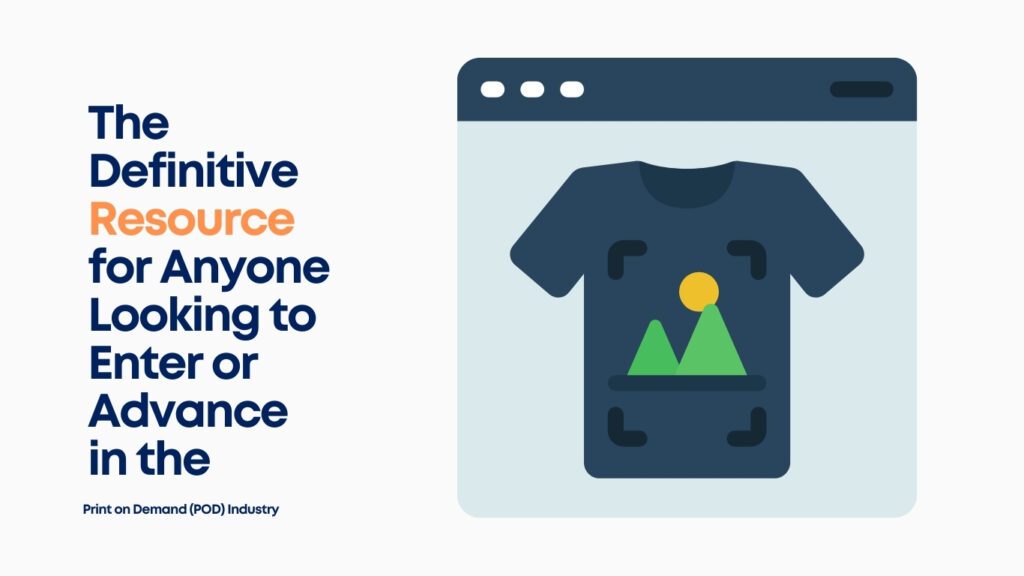
Learn the ins and outs of POD how it works which platforms are ideal for beginners” success tactics and how to make money with this business model in this comprehensive book.
Can you explain Print on Demand (POD)?
As a Print on Demand service,, we wait to print your items until you make an order. You won’t need to worry about managing inventories or making large purchases. The POD platform takes care of production packing and shipping so you can concentrate on making unique designs and advertising your products.

There is no need to invest in inventory or worry about storage with POD because of its zero inventory management feature.
You are not required to meet any minimum order requirements while selling a single product.
Make your wares customizable by including designs that speak to your personal taste ideas or brand.
How Is Print on Demand Operated?
First Create Your Design. Make use of graphic design software such as Canva or Adobe Illustrator to make unique product designs. Verify that they are of the right size and quality for the platform.
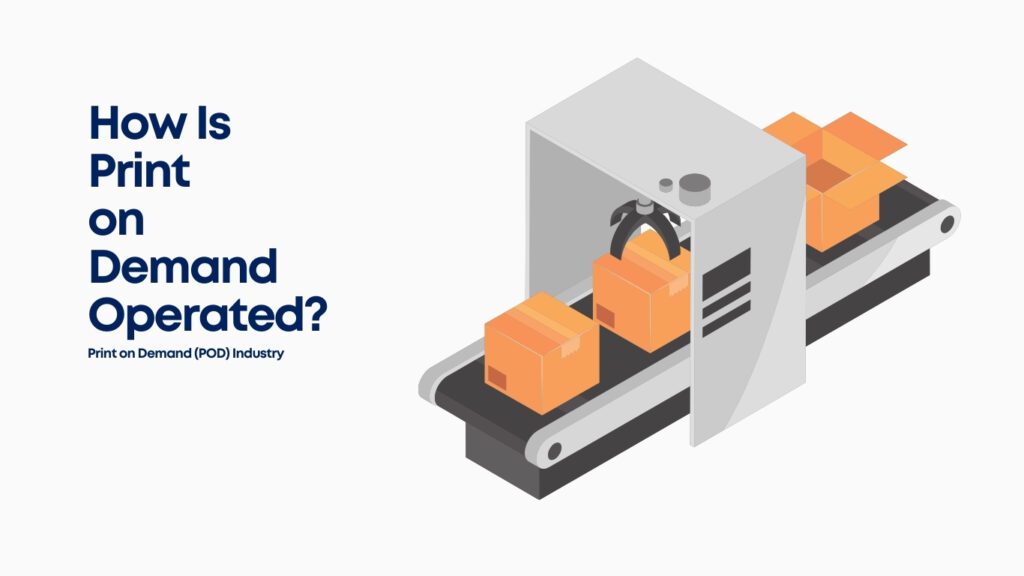
2. Upload to a POD Platform: Select a POD platform such as Teespring Printful or Redbubble and use their product templates to upload your designs. Things like hoodies tshirts phone covers and mugs could fall into this category.
Step 3: Create Your Online Store: Numerous POD systems are compatible with popular e-commerce platforms like as Shopify WooCommerce or Etsy. This opens the door for you to establish an online shop where clients can peruse your creations.
4. Market Your Store: To increase foot traffic use search engine optimization (SEO) social media marketing influencer partnerships email marketing and more. Your chances of generating sales are directly proportional to the amount of attention you receive.
• Customer Orders & Fulfillment: The POD platform takes care of printing packaging and shipping when a customer buys something from your business.
6. Earn Profits: You can increase your earnings by charging more for your products than the base price offered by the POD platform. Your profit is the distinction between the two.
The Best Platforms for Printing on Demand
1. Printful Overview: One well-known POD platform Printful sells not only clothing and accessories but also home decor items.

The advantages: Quick and painless connection with popular e-commerce systems like Shopify WooCommerce Etsy and many more. Products of superior quality.
Drawbacks: Thinner profit margins may result from higher base prices.
Perfect For: Business owners who already have an online store or are planning to add POD functionality to their website.
2. Redbubble Overview: Redbubble is a marketplace where millions of people are seeking one-of-a-kind art and you can submit your designs to sell them.
Pros: It’s free to use and has a large customer base.
Drawbacks: Marketing and customer involvement are not fully within your control.
This is the perfect solution for creatives who don’t have the time or inclination to launch their own website but yet want access to a large audience.
3. Teespring (now Spring) Overview: Creators can use Teespring to sell their products directly through the platform.
The advantages: Features an intuitive UI and an integrated audience.
Drawbacks: Less control over branding and more competition.
Perfect For: Novices who want to try out the POD market but don’t have a website yet.
Society6 is a platform that showcases the work of artists and designers through the sale of art prints home decor furniture and more.
Pros: Perfect for creative types and artists whose work attracts an imaginative following.
The presence of numerous professional artists creates intense competition.
For artists that value originality and excellence in their work,, this is the perfect solution.
5. Zazzle Overview: Zazzle is an online marketplace where designers may sell their wares in a variety of product categories.
The advantages: More product customization options are available across many categories.
Drawbacks: Profit margins are very modest and competition is fierce.
Perfect For: Makers seeking adaptability in their product lines.
Guidelines for Making It Big in the POD Industry

1. Determine Your Specialization – It’s wise to zero down on a particular field or subject that you know will captivate a certain demographic. A speciality allows you to distinguish yourself in a competitive market whether you’re selling motivational t-shirts or mugs with a pet theme.
2. Make original high-quality designs – Dedicate effort to making designs that are both original and of professional quality. Make use of programs such as Canva Illustrator or Photoshop. More clients are drawn to higherquality designs which can be justified by charging a greater price.
3. Maximize Your Stores SEO- Use keywords that customers are likely to look for in product titles descriptions and tags. Both the POD platform and search engines can benefit from this.
Social media sites such as Instagram Pinterest and TikTok are great places to advertise things because of the visual appeal they provide. Maintain interest by sharing details about your design process comments from satisfied customers and the introduction of new products.
5. Provide Products Based on Seasonal and Trend Information – Make designs that attract customers throughout certain periods of the year in honour of holiday trends or events. During busy times designs with a Christmas theme or popular memes can increase sales.
6. Create a Reputation for Your Products Maintaining a constant brand identity is essential even while using POD. To establish a distinct identity for your brand on the web it is important to design a logo select brand colors and stick to a consistent style guide.
Print on Demand: A Guide to Making Money
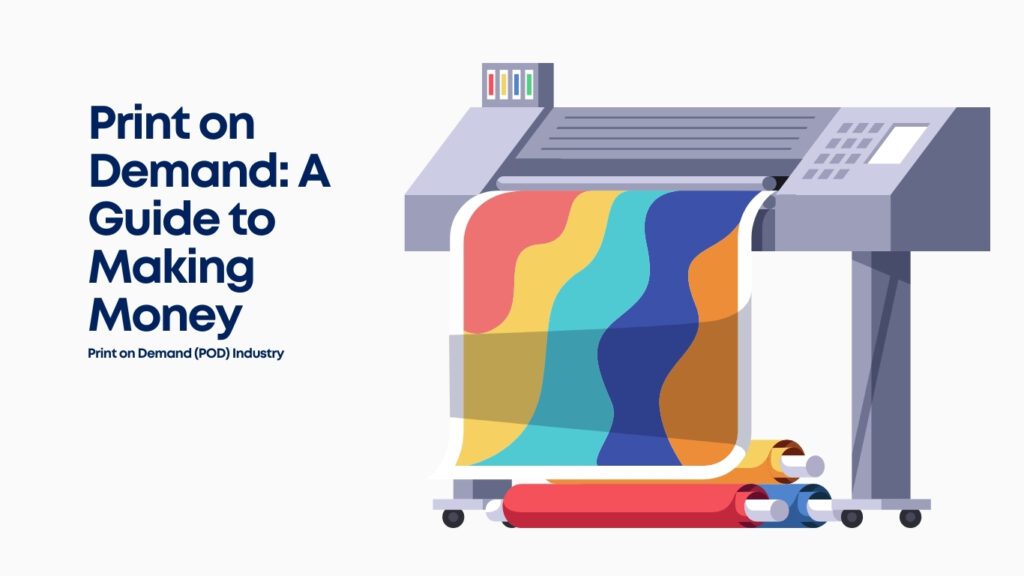
1. Increase Your Profits to Their Full Potential – You should make sure you are earning enough profit after deducting the fees of the POD platform before setting low prices to attract clients. Find a happy medium between offering low prices and making a fair profit.
2. Have an Eye on Upselling and Bundling – You can get clients to spend more money by providing them with bundles of products or by proposing other things that they might like. If a consumer buys a t-shirt you should offer a mug that goes with it.
3. Develop TimeConstrained Designs – Creating a feeling of scarcity helps boost purchases. A feeling of exclusivity and urgency to buy can be achieved through limited-edition designs.
Fourth Use Influencer Marketing – Work with people that have a large following in your niche to promote your items. Expanding your audience and establishing your brand’s credibility can be achieved through this.
5. Promote Sales and Other Deals – New and returning consumers alike can benefit from periodic sales and discount vouchers. To make things more pressing these deals may have a time limit.
Problems to Think About with POD
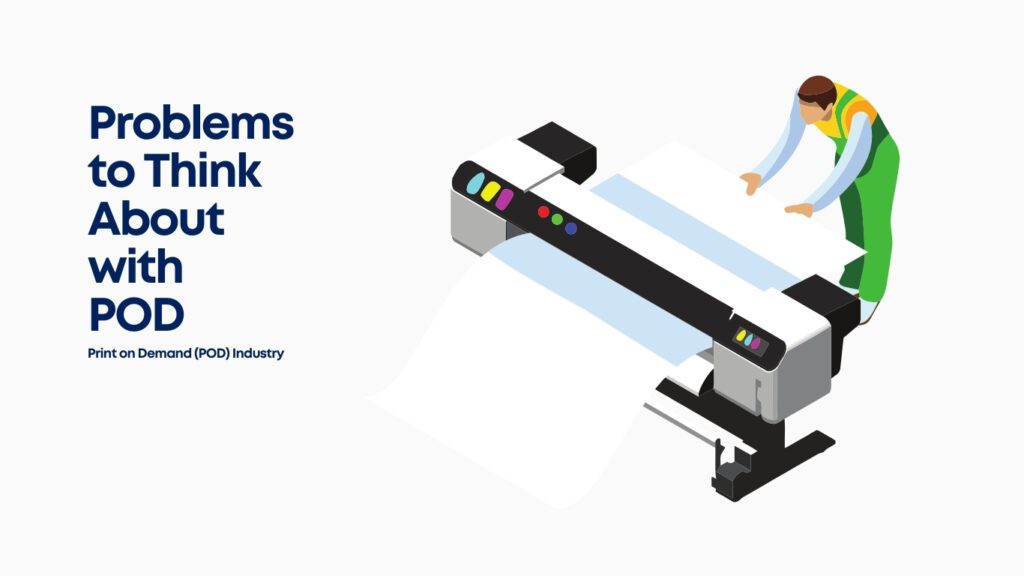
1. Very Low-Profit Margin Because you aren’t in charge of the production process directly the POD platform determines the starting costs for your products which means your profit margins may be smaller.
There is a lot of competition in the POD industry so you need to be inventive and put in a lot of marketing work to stand out.
3. Controlling Quality – It could be difficult to maintain consistent product quality when you aren’t involved in the printing or shipping processes directly. Before selling make sure you order samples to evaluate the quality.
4. Shipping Times – Delivery times could differ from one platform to another and from one customer’s area to another. Customers should not have their expectations inflated if you are upfront with them about possible shipment delays.
Print-on-demand is a fantastic opportunity for businesses as discussed in the conclusion.
For entrepreneurs seeking to venture into the realm of online commerce Print on Demand provides a low-risk artistic outlet that eliminates the need to handle inventory management. If you have a creative bent this is the perfect business model for you. Although there is a lot of competition you can increase your chances of success by concentrating on making distinctive designs establishing a solid brand and advertising your products well.
Print on Demand gives you everything you need to make your designs into goods that people will adore whether you’re just starting out as a side hustle or trying to set up shop full-time. Best of luck with your design.
Learn all you need to know about Print on Demand with this comprehensive book and get your online business off the ground in no time. Be creative sell your products well and keep up with trends if you want to succeed in this competitive market!
Print on Demand (POD) Q&A
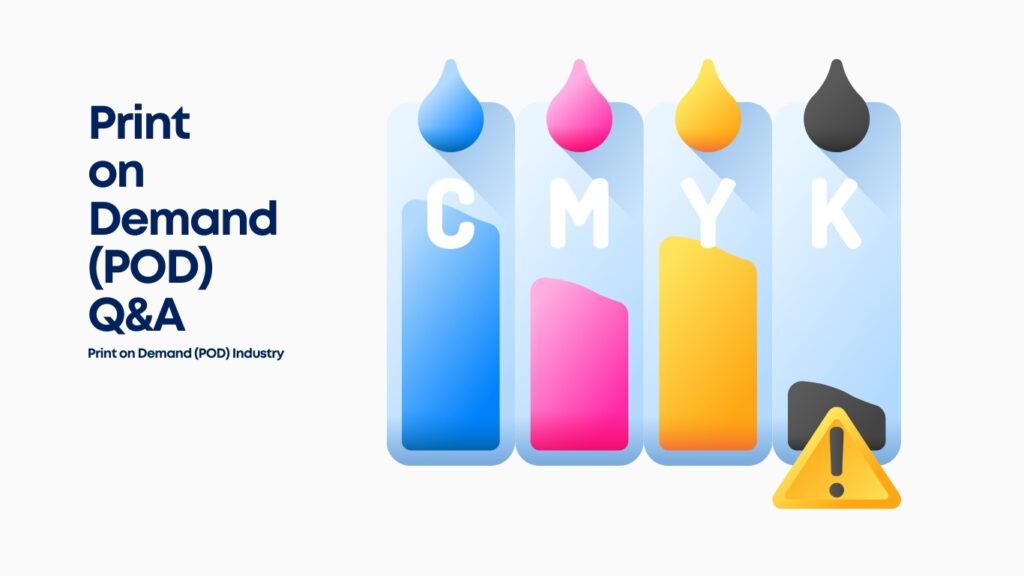
Q1: What is Print on Demand (POD)?
Print on Demand is a business model where custom-designed products such as t-shirts mugs and posters are only produced once an order is placed. This eliminates the need for holding inventory as the printing and shipping are managed by a third-party provider.
Q2: How does Print on Demand work?
The process involves creating designs uploading them to a POD platform and integrating with an ecommerce store or selling directly through the platform. When a customer purchases a product the POD provider handles the printing packaging and delivery.
Q3: What are the best Print on Demand platforms?
Popular platforms include:
Printful: Known for high-quality products and integration with Shopify Etsy etc.
Redbubble: A marketplace with a large existing audience.
Teespring (Spring): Easytouse platform for beginners.
Society6: Ideal for artists focused on art prints and home decor.
Zazzle: Offers a broad range of customizable products.
Q4: How much does it cost to start a POD business?
Starting a POD business typically requires minimal upfront investment. Most costs are related to creating designs setting up an e-commerce store (if using platforms like Shopify) and marketing efforts. There are no costs for inventory since products are only made when sold.
Q5: Can I make money with Print on Demand?
Yes,, you can make money with POD by creating in-demand designs and effectively marketing them. Profit is earned by setting a retail price higher than the base cost charged by the POD provider. However, success depends on your ability to stand out in a competitive market and build a loyal customer base.
Q6: What types of products can I sell with POD?
POD platforms offer a wide range of products including:
Apparel (t-shirts hoodies leggings)
Accessories (phone cases tote bags hats)
Home decor (pillows posters canvas prints)
Drinkware (mugs water bottles)
Stationery (notebooks stickers)
Q7: How do I create designs for my POD products?
Use graphic design tools like Adobe Illustrator Photoshop or Canva to create high-quality designs. Focus on designs that are appealing to your target audience and suitable for the product type (e.g. bold graphics for t-shirts intricate patterns for mugs).
Q8: Do I need my own website to start a POD business?
Not necessarily. Many POD platforms like Redbubble and Teespring have built-in marketplaces where you can list your products. However, having your own website through platforms like Shopify or WooCommerce gives you more control over branding marketing and customer relationships.
Q9: How can I promote my POD products?
Effective ways to promote your POD products include:
Social Media Marketing: Use Instagram Pinterest and TikTok to showcase your designs.
SEO: Optimize product listings for search engines.
Email Marketing: Build an email list to inform customers about new products or discounts.
Influencer Marketing: Partner with influencers to reach a wider audience.
Q10: What are the common challenges of Print on Demand?
Some challenges include:
Thin Profit Margins: Since the base cost is set by the POD provider profit margins can be slim.
High Competition: The POD market is saturated so standing out requires unique designs and effective marketing.
Quality Control: You don’t directly handle the production so it’s essential to order samples to ensure product quality.
Shipping Times: Depending on the location of the customer and the provider shipping times can vary which may affect customer satisfaction.
Q11: How can I differentiate my POD store from others?
Focus on creating a strong brand identity and niche. Offer exclusive designs that cater to a specific audience or theme. Additionally, engage with your customers through personalized marketing and build a community around your brand to foster loyalty.
Q12: Can I sell POD products globally?
Yes many POD platforms have a global shipping network. However,, it’s essential to understand the shipping costs and delivery times for different regions. Make sure to clearly communicate shipping times to avoid customer dissatisfaction.
Q13: Is POD environmentally friendly?
POD can be more eco-friendly compared to traditional manufacturing because products are only made when they’re ordered which reduces overproduction and waste. However, the environmental impact also depends on the materials used and the shipping methods of the POD provider.
Q14: What is the best way to price my POD products?
Consider the base price of the product the desired profit margin and the prices of similar products in the market. While competitive pricing is important ensure that you’re making enough profit to sustain your business.
Q15: What is the future of Print on Demand?
POD continues to grow as e-commerce expands and more consumers seek personalized and unique products. Innovations in printing technology and sustainable production methods are likely to enhance the industry’s appeal making it a viable long-term business model for creative entrepreneurs.
This Q&A offers a quick dive into the Print on Demand industry providing valuable insights for beginners and seasoned sellers alike. Happy designing and selling!
